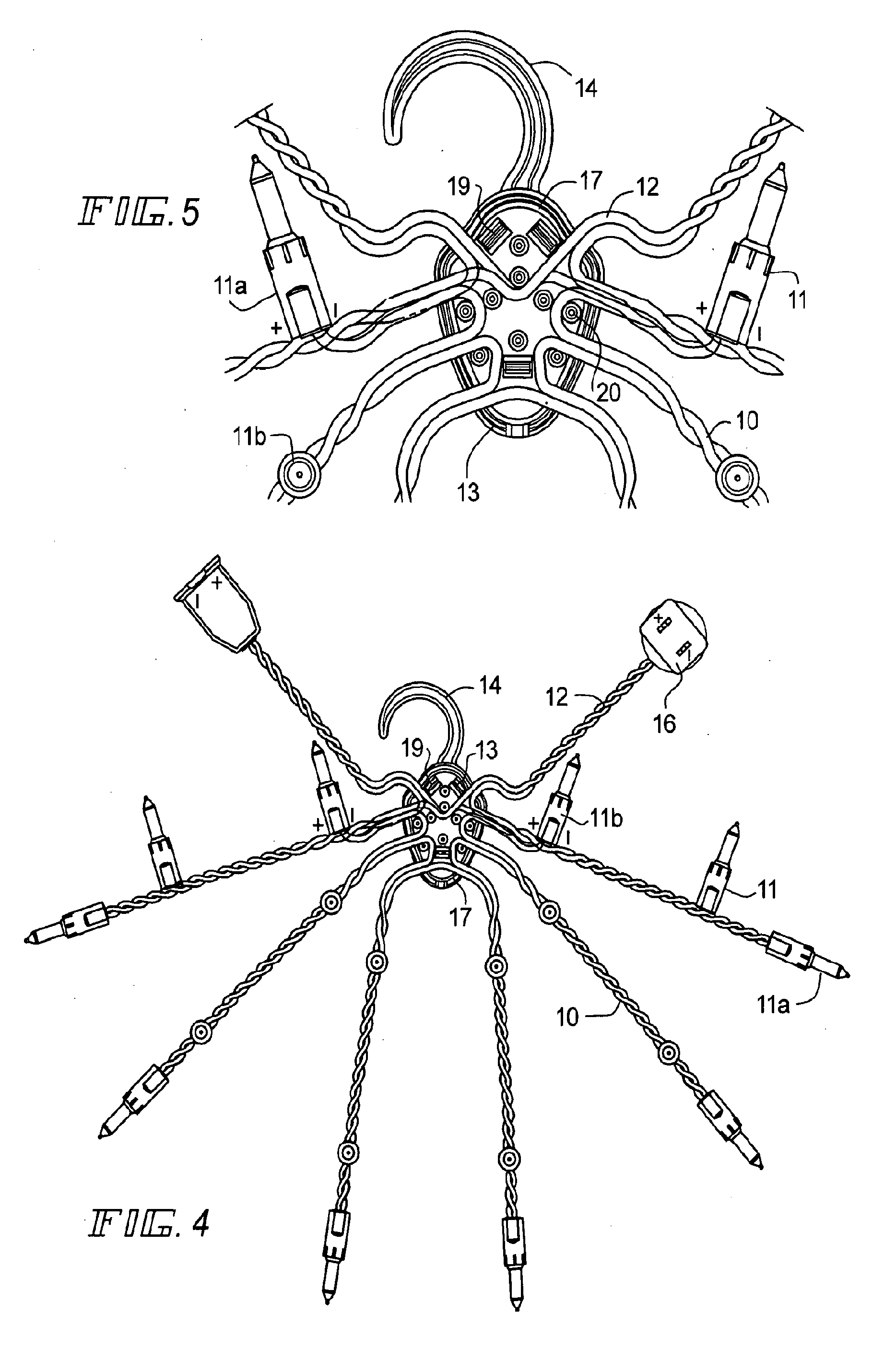Decorative Lighting Strand and Method of Assembling and Installing Same
- Summary
- Abstract
- Description
- Claims
- Application Information
AI Technical Summary
Benefits of technology
Problems solved by technology
Method used
Image
Examples
Embodiment Construction
[0057]With reference to the accompanying drawings and particularly to FIGS. 1-3, a strand 10 of lamps 11 are arranged on electrical wires 12, and trained through a hub or spreader 13, which preferably may have a hook 14 for engaging a tree limb or other structure. A number of strands 10 may be bundled together through the hub 13, which pre-separates the wires. The hub may be used to stabilize the strand. A plug 15 and socket 16 for connecting the bundle of strands 10 to another bundle or strands and / or to a source of power may also be provided and arranged connected to the wires 12 through the hub 13 The lamps may be oriented relative to the wires 12 and hub 13, so that some lamps 11a are extended in the plane of the wires 12 and other lamps 11b are arranged in a plane perpendicular to the wires 12.
[0058]As shown in FIG. 3, the hub 13 may comprise a body 17 and a cover 18, which can be snapped together by means of barbed teeth 19. With reference to FIGS. 4 and 5, the body 17 may als...
PUM
| Property | Measurement | Unit |
|---|---|---|
| Power | aaaaa | aaaaa |
| Structure | aaaaa | aaaaa |
| Length | aaaaa | aaaaa |
Abstract
Description
Claims
Application Information
 Login to View More
Login to View More - R&D
- Intellectual Property
- Life Sciences
- Materials
- Tech Scout
- Unparalleled Data Quality
- Higher Quality Content
- 60% Fewer Hallucinations
Browse by: Latest US Patents, China's latest patents, Technical Efficacy Thesaurus, Application Domain, Technology Topic, Popular Technical Reports.
© 2025 PatSnap. All rights reserved.Legal|Privacy policy|Modern Slavery Act Transparency Statement|Sitemap|About US| Contact US: help@patsnap.com



